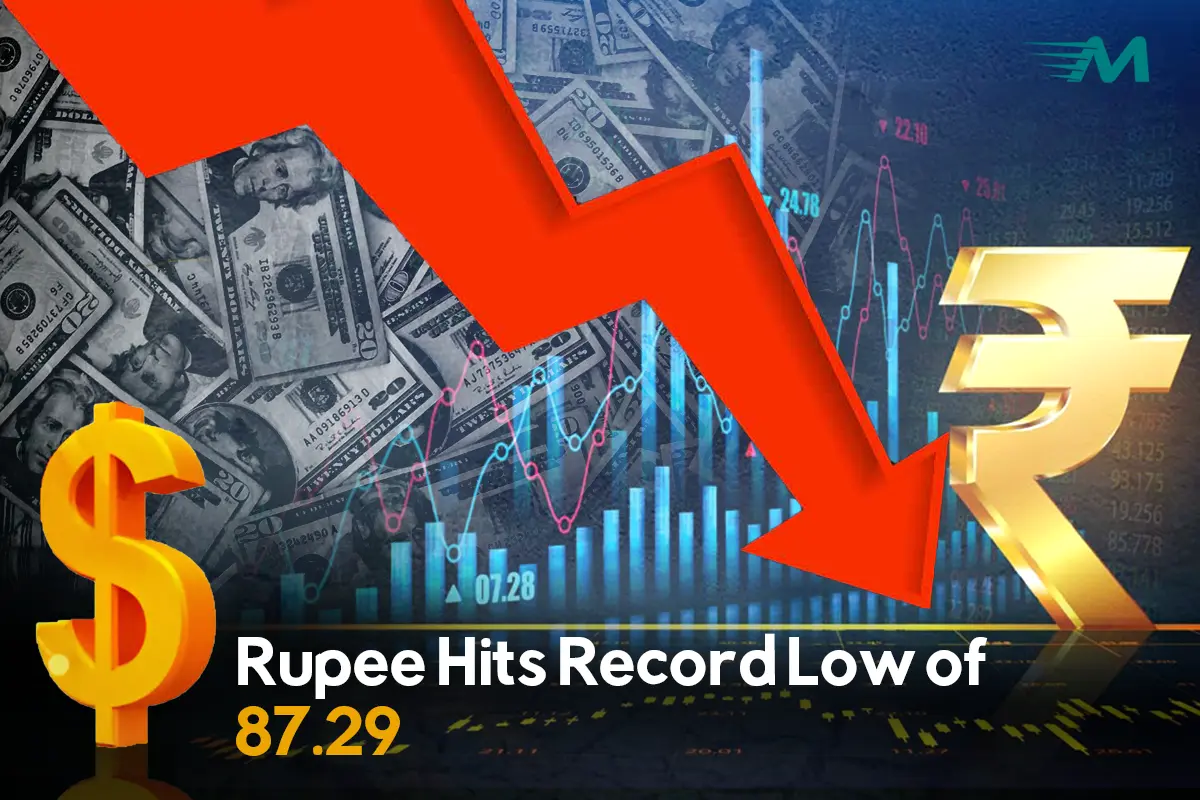Indian Rupee Hits Record Low of 87.29 Following Trump’s Statements
The Indian rupee has faced yet another sharp decline, reaching a record low of ₹87.29 per US dollar. This drop comes in response to recent statements made by Donald Trump, which have fueled uncertainty in global financial markets. The depreciation of the Indian currency has raised concerns among investors, businesses, and policymakers alike. The impact of this fall extends to trade, inflation, and overall economic stability.
As the value of $1 in rupees continues to weaken, the cost of imports is rising, adding pressure on India’s economy. The question now is: What led to this sharp fall, and how will it affect the Indian financial landscape?
Trump’s Statements and Their Impact on the Indian Rupee
Former U.S. President Donald Trump recently made remarks about potential tariffs on imports and a stricter trade policy should he return to power. These statements have caused turbulence in global currency markets, leading to the Indian rupee’s fall.
Key Factors Behind the Rupee’s Depreciation
Several factors contributed to the sharp decline of the Indian rupee:
- Strengthening of the US Dollar
- The US dollar has gained strength due to rising interest rates and investor confidence in the American economy.
- A strong dollar means a weaker rupee, making it more expensive for India to import goods.
- Market Uncertainty Due to Trump’s Policies
- Trump’s statements about Donald Trump tariffs and trade restrictions have made global investors cautious.
- Emerging markets, including India, are facing capital outflows as investors move towards safer assets like the US dollar.
- Weak Domestic Economic Data
- Slowing exports, increasing trade deficits, and inflation concerns have also contributed to the falling Indian currency.
- The Reserve Bank of India (RBI) has been intervening to stabilize the market, but global forces continue to exert pressure.
How the Rupee’s Decline Affects the Indian Economy
The depreciation of 1 US dollar in rupees to an all-time low of ₹87.29 has widespread economic implications:
Higher Import Costs
India relies heavily on imports, including crude oil, electronics, and machinery. A weaker rupee makes these imports more expensive, leading to higher prices for consumers.
Inflationary Pressures
- The rising cost of imports contributes to inflation, affecting essential goods like fuel and food.
- Inflation reduces purchasing power, making everyday expenses more burdensome for the average Indian.
Impact on Foreign Investments
- Investors typically pull out funds from weaker economies when uncertainties rise.
- If capital outflows continue, the US dollar rate in India could further increase, adding to financial instability.
Exporters May Benefit
- While a weaker rupee hurts imports, it can benefit Indian exporters.
- Indian goods become cheaper for foreign buyers, potentially boosting industries like IT, textiles, and pharmaceuticals.
Government and RBI’s Response to the Rupee’s Fall
RBI’s Measures to Stabilize the Rupee
- The Reserve Bank of India (RBI) has been actively intervening in the foreign exchange market to prevent excessive volatility.
- Measures include selling foreign exchange reserves and adjusting interest rates.
Government’s Policy Approach
- The Indian government may consider policy adjustments to attract foreign investments and strengthen economic growth.
- Reducing trade deficits and increasing exports remain key priorities.
Future Outlook: Will the Rupee Recover?
Several factors will determine whether the Indian rupee falls further or recovers in the coming months:
- US Economic Policies
- If Donald Trump tariffs come into effect, emerging markets like India may experience prolonged currency weakness.
- A stable US dollar rate in India will depend on the Federal Reserve’s interest rate policies.
- India’s Trade and Investment Climate
- Strengthening exports and increasing foreign investments can help stabilize the Indian currency.
- Government initiatives in infrastructure and manufacturing may attract global investors.
- Global Economic Conditions
- A slowdown in global economic growth could impact India’s foreign exchange reserves and market confidence.
While short-term fluctuations are expected, a balanced approach from policymakers can help mitigate risks and stabilize the rupee.
Conclusion
The sharp fall of $1 in rupees to ₹87.29 highlights the volatility of the Indian currency amidst global uncertainties. The impact of Donald Trump tariffs and a strong US dollar has put immense pressure on the rupee, affecting imports, inflation, and investments. However, strategic policy interventions by the RBI and the government can help stabilize the situation.
As the world closely watches economic developments, India must focus on strengthening its financial fundamentals to withstand global challenges. For now, businesses and individuals should brace for further fluctuations in the US dollar rate in India, as external factors continue to drive currency movements.
FAQs
1. Why is the Indian rupee falling against the US dollar?
The rupee is falling due to a combination of global market uncertainties, a stronger US dollar, and concerns over potential Donald Trump tariffs that may impact trade relations.
2. How does a weak rupee affect the Indian economy?
A weaker rupee increases import costs, fuels inflation, and impacts foreign investments. However, it can benefit exporters by making Indian goods cheaper in the global market.
3. Can the rupee recover from its record low?
The recovery of the Indian currency depends on various factors, including global economic conditions, US monetary policies, and India’s trade and investment climate. Policymakers are taking steps to stabilize the rupee and control inflation.



